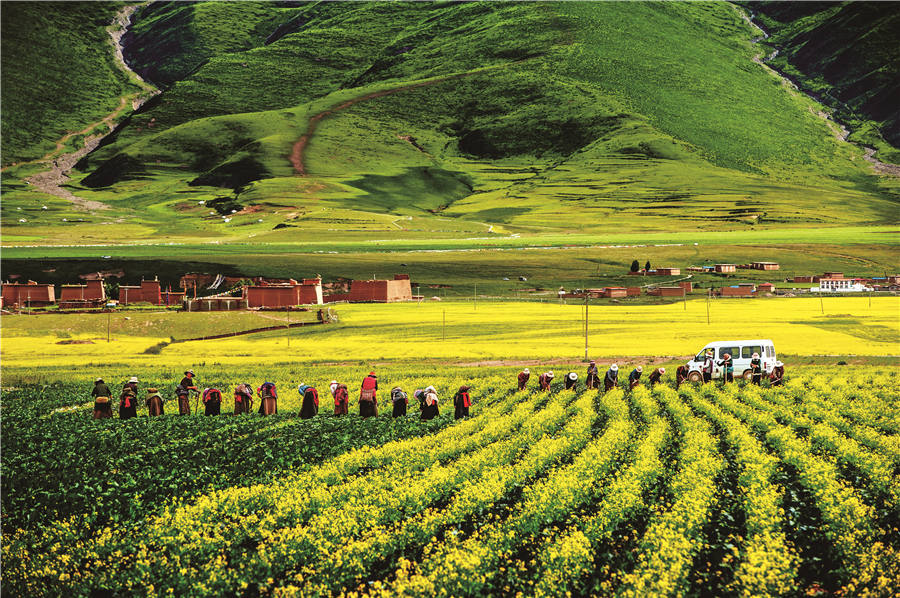Planting trees to build a greener, healthier future


Editor's Note: Thanks to years of efforts, China has made some remarkable achievements in the field of environmental protection. But can it overcome the remaining challenges? In the fifth of a series of commentaries, a senior journalist of China Daily tries to find the answer:
A World Bank report issued in July said that in the past three decades, the global forest area has shrunk remarkably, the only exception being East Asia, which saw an increase in forest cover due to China's successful afforestation and greening program.
Though the nationwide ban on cutting trees in natural forests for commercial purposes did not come into force until 2017, regional bans on such activities have been in place for decades and have prevented millions of hectares of forests from being destroyed.
As a little boy, I admired lumberjacks a lot. I remember a documentary film in which a tall, muscular lumberjack, with a noisy diesel-powered chainsaw in hand, sawed through a 10-story-high pine tree with sawdust flying in every direction. It looked so cool then.
Fortunately or unfortunately, famugong, the Chinese word for lumberjack, is rarely used these days. Perhaps we may have to explain to our grandchildren what it means.
Two years ago I visited Yichun, a city in Heilongjiang province that has one of China's largest forests, Xiaoxinganling, and I tried to find some lumberjacks. I found a couple of them, both retired though. Occasionally, they became excited when talking about the past. But most of the time, they regretted chopping trees.
Chainsaws and axes were nowhere to be seen in the area. Planes, drones and motorcycles were available for aerial seeding and forest patrolling. Tree-cutting was stopped a long time ago, and the lumberjacks' children and grandchildren were busy planting trees, or collecting pine nuts and mushrooms in the forest for extra income.
Apart from preserving the forests, the government has taken measures to protect the old trees scattered across the country. In China, old trees are divided into three protective categories: trees older than 500 years belong to "class one", and those older than 300 and 100 years to "class two" and "class three" respectively.
That explains why often our roads have to make way for a tree. In some regions, the authorities have gone even further by registering all the trees above a certain age. If a person has to chop a tree even in his or her yard, he/she needs the approval of the authorities and has to pay environmental damage fees in cash or by planting a number of trees somewhere else.
While famugong seems to be going out of circulation, zhishu, or tree planting, is being increasingly used nowadays. Top Party and government leaders of different generations have been planting trees since 1979 on National Tree Planting Day. So it's little wonder that Sanbei Protective Forest project is the largest and the longest tree planting project in the world-it started in 1978 and will continue until 2050.
Aimed at improving the environment and ecology of the Sanbei region, the eco-conservation project that covers 42.40 percent of China's territory has drawn millions of people to plant trees. San in Chinese means three and bei north-that is, North China, Northeast China and Northwest China. The project has been divided into eight stages and the fifth stage will end this year. And a report in August said the tree-planting project had covered 30.14 million hectares in the Sanbei region.
Although there has been a dispute among scientists on whether the project has been successful in effectively checking desertification and reducing soil erosion in the region, no one can deny that billions of trees have been planted, which in the long run will improve the overall environment and ecology of China.
By planting trees, the Chinese people have turned Saihanba, a desert area in northern Hebei province into a 1,000 square kilometer national forest park, which is now a hot destination for tourists. By planting trees, they have also tamed China's seventh-largest desert in Kubuqi in the Inner Mongolia autonomous region and turned the barren mountains green.
The Sanbei project still has 30 years to go. We know it takes a long time for trees to grow and benefit humans. But we also know that if we plant trees today, they may not benefit us but will surely benefit our children and grandchildren, and contribute to the global fight against climate change.
The author is former deputy editor-in-chief of China Daily.


































